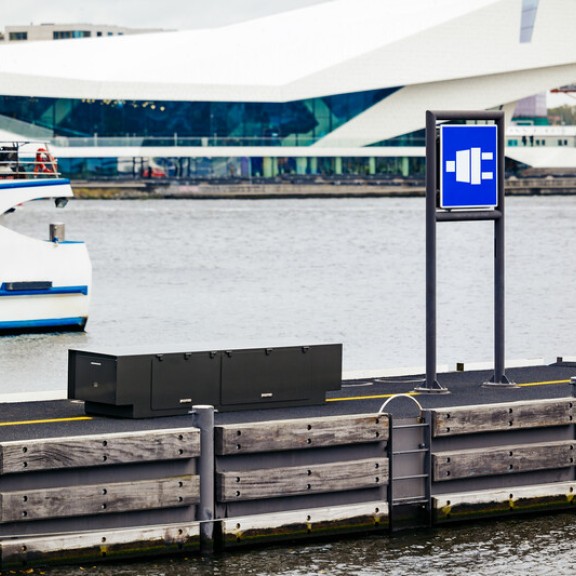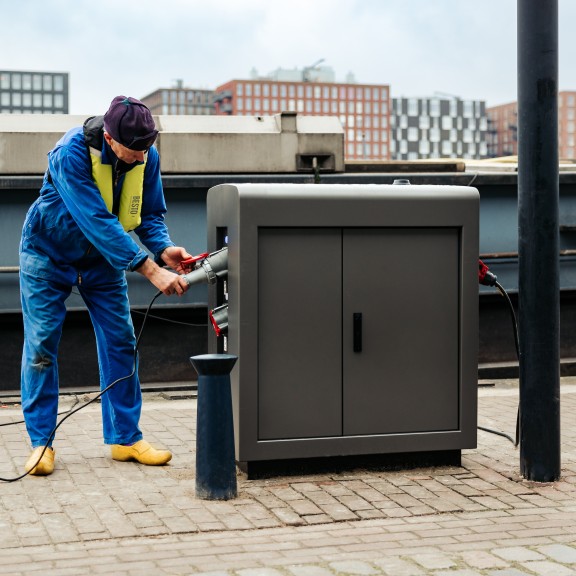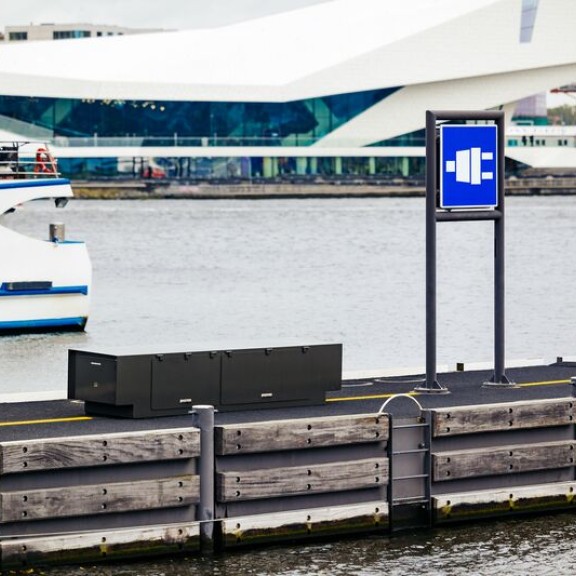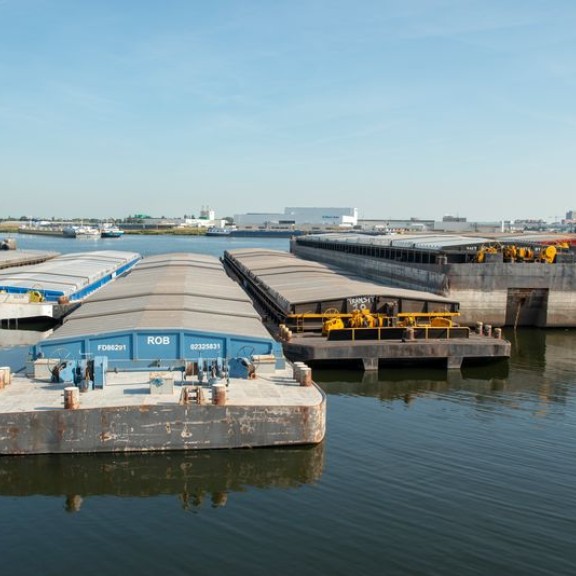
Shore power
Lower emissions have a positive effect on the environment and living conditions. Thanks to shore power, ships can moor at the quay without any emissions or noise pollution. Port of Amsterdam offers shore power at various locations for inland navigation, river cruise and sea cruise.

Extension and installation of shore power
To reduce CO2 emissions in the port of Amsterdam and improve air quality, we have started to increase the number of shore-based power cabinets. We are also replacing the existing shore power units with so-called 'smart' units. Moored inland navigation and river cruise vessels can connect to these shore power units to meet their energy needs and switch off their diesel engines. In the event of a malfunction, the new 'smart' cabinets can be read and reset remotely, so that the malfunction is resolved more quickly.
Additionally, we are in the process of installing shore power at the Passenger Terminal Amsterdam. Via a European tender, Powercon has been selected to aid in the installation of shore power for ocean cruises, with BAM acting as a subcontractor. The foundation construction is set to commence in February. Simultaneously to this, Liander will initiate the power cable installation process. The entire project is expected to be completed in the first quarter of 2025.
Starting from 2030, it will be mandatory for all ocean cruise ships to use shore power. Due to the central location of the terminal in a densely populated part of Amsterdam, we aimed to reduce emissions earlier than required by legislation. This primarily involves reducing CO2 emissions, contributing to Amsterdam's goal of being climate-neutral by 2050 and aligning with the European 'Green Deal.'
Pillar of the 'Clean Shipping Vision'
Port of Amsterdam considers the installation of the new quayside electricity units for inland navigation and river cruise and the realisation of a quayside electricity connection for sea cruise at the Passenger Terminal Amsterdam as an important part of the pillars Port Emission Reduction Technologies in the new 'Clean Shipping Vision'. Shore-based power contributes to the reduction of CO2 and NOx emissions, to the local improvement of air quality (e.g. less particulate matter) and to noise reduction. The latter two are important if the ship is moored close to residential areas.


Map of shore power cabinets
In the Amsterdam region, there are already various shore-based power locations for both inland shipping and river cruising. See the picture below.

European funding
Port of Amsterdam has received a European subsidy within the framework of the Connecting Europe Facility programme (CEF) for the further development of shore-based power in the Amsterdam port. CEF focuses on research for the development of a high-performing, sustainable and efficient European network in the field of transport, energy and telecommunications.
Our research focuses on 3 themes:
- Development of a long-term strategy and area vision for the further development of shore-side electricity, in close cooperation with the terminals in the Amsterdam port area and the main shipping companies sailing to Amsterdam.
- Technical investigation, design and investment decision for the realisation of shore-based power for sea cruises at the Passenger Terminal Amsterdam.
- A feasibility study, technical design and social cost-benefit analysis for several new locations in the port area; so-called public berths for inland navigation and coasters (see drawing below), which are not yet equipped with shore-based power.
Contact us
Do you want to report a malfunction with one of the shore power cabinets? Please contact Ease2Pay.
In case of failure call: +31 (0)88 - 1707703

This publication reflects the views only of the author. The European Union is not responsible for any use that may be made of the information contained therein.
